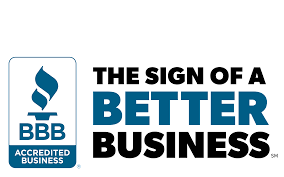“So What If You Don’t Fix It Right Now?”
November 29, 2022

As we know, a Condominium Association has many duties and obligations to fulfill including the collection of assessments, and the enforcement of the provision of the Condominium Documents.(1) In addition, the Association also has another very  important duty: the maintenance and repair of the common elements. This duty not only is relevant to the aesthetics and the upkeep of the appearance of the condominium, but also encompasses safety concerns as well. A Board of Directors of an Association that ignores its maintenance and repair duties or otherwise does not take them seriously enough exposes the Association to potential liability from claims of co-owners and others who come to the condominium. This article will focus on some key issues that Boards must consider in the fulfillment of their maintenance and repair obligations, and will also discuss the ramifications of neglecting such duties and not diligently taking action in a timely fashion.
important duty: the maintenance and repair of the common elements. This duty not only is relevant to the aesthetics and the upkeep of the appearance of the condominium, but also encompasses safety concerns as well. A Board of Directors of an Association that ignores its maintenance and repair duties or otherwise does not take them seriously enough exposes the Association to potential liability from claims of co-owners and others who come to the condominium. This article will focus on some key issues that Boards must consider in the fulfillment of their maintenance and repair obligations, and will also discuss the ramifications of neglecting such duties and not diligently taking action in a timely fashion.
When faced with a maintenance and/or repair issue, the stating point, of course, is to determine whether the area in question is, in fact, an item for which the Association has the duty to maintain, repair and/or replace. This may not necessarily be as simple as it sounds. While the Master Deed for the condominium generally will define the general and limited common elements of the condominium project and delineate the corresponding maintenance and repair responsibilities of the co-owners and the Association, sometimes the item in need of repair may fall into a “gray area”, leaving it unclear who has the responsibility of repair. For example, while the Master Deed may provide that the Association has the duty to maintain the structure of the floor between unit levels, consider what happens when a co-owner requests that the Association fix a floor in his unit that constantly squeaks when walked upon. The question then arises: Is a floor squeak a structural problem, which the Association must remedy, or a “cosmetic” one that is left to the co-owner to solve? In dealing with a repair responsibility that falls into such a “gray area”, the Board would be wise to seek out advice and assistance from its legal counsel and professionals associated with the construction industry. Inaction or procrastination by the Board in addressing the issue ultimately engender legal action by a frustrated co-owner to enforce the Association’s repair responsibilities, resulting in the Association, at the very least, incurring attorney fees and costs to defend the lawsuit.
Associations may find it helpful to create a “repair matrix” in the form of a chart that can serve as a quick reference guide for determining the maintenance and repair responsibilities of the Association and co-owners. This chart should be submitted to the Association’s attorney for review and any additions or corrections.
Once the Board determines that the Association is responsible for the maintenance or repair of a particular area, it should then thoroughly evaluate the scope of the need maintenance/repair and obtain estimates from licensed contractors. Obviously, this step is less complicated when dealing with simple or routine maintenance such as painting the exterior of buildings, as opposed to being confronted with the problem of deteriorating roads or roofs, for example. Some contractors may propose different repair approaches than other to solve the problem. It is the Board’s duty then to determine which repair approach to adopt. While the Board may not necessarily be compelled to select the most expensive repair, the Board may want to think twice about choosing the cheapest repair that merely represents an “band-aid” solution that may ultimately prove not to be a proper repair. While cost is an important consideration, it should not be the sole basis for the decision. Conversely Association funds in the short term may only lead to the expenditure of even more money down the road to rectify a failed “repair”.
Perhaps the most important thing that the Board should do is to take prompt action. The time frame within which the Board should act as dictated, of course, by the type of maintenance or repair that is needed. Routine maintenance associated with the appearance of the condominium is less urgent than addressing potential safety concerns or conditions that may lead to damage to the common elements or a co-owner’s unit. For example, sidewalks that are heaving and creating a tripping hazard require quicker action than scheduling the repainting of signs or buildings. For those repairs needed to correct safety hazards or to avoid damage to the common elements or units, prompt action should be taken by the Board, and any concern regarding the availability or expenditure of funds should not be allowed to pose a serious impediment to moving forward with corrective measures. If the Board has truly been attentive to its duties, a reserve fund should be available for any major repairs. The Board has a statutory duty to ensure that adequate reserves are set aside for major repairs and replacement of common elements. It is a breach of the Board’s fiduciary duty to fail to establish reserves. If such reserves are not set aside, a Court will probably not listen very favorably t an Association that claims that it did not have the money to make a repair, where the failure to respond resulted in an injury to a co-owner or damage to a co-owner’s unit.






